


Over the past few years, blockchain has been gaining popularity. Many are tired of traditional digital formats, and technologies like Web 3.0 represent a step forward for the online space. They open up new possibilities for app development that any business can benefit from.In this article, we’ll talk about the difference between Web2 and Web3 and explore their pros and cons. We'll also explain how you can take advantage of Web 2.0 and Web 3.0. Let’s dive in!
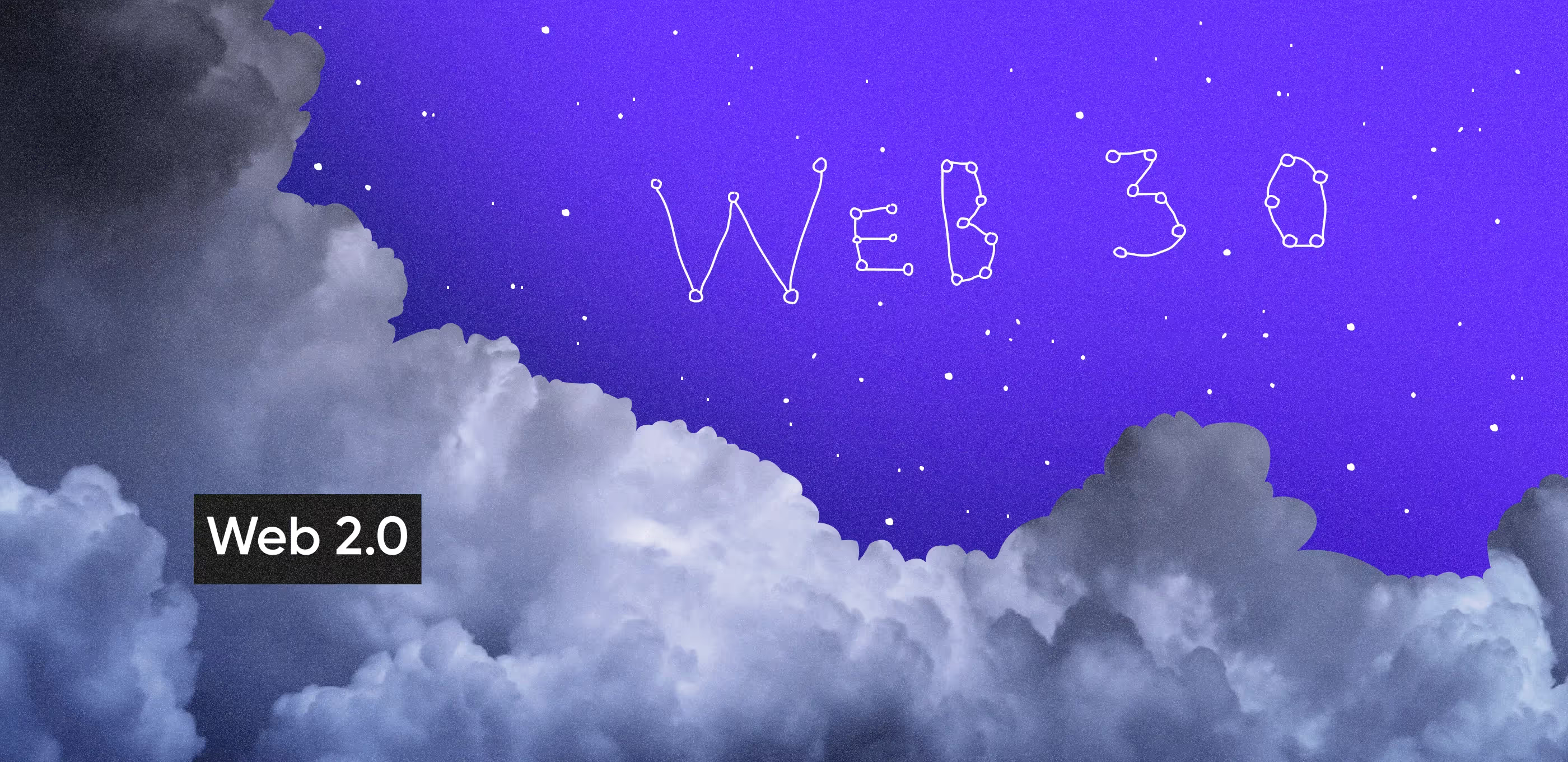
Web 2.0 is the current version of the World Wide Web — the Internet we all know and love. It hosts every resource imaginable: online stores, video sites, social networks — you name it.
By its nature, Web 2 is centralized. This means that most websites are controlled by a third party, who owns and manages all the content on their pages. This means that external users cannot change it in any way. Also, platforms on Web 2.0 are usually hosted by intermediaries like Google or Amazon, who rent out their servers and development tech. This makes corporations like these a major component of the Web2 ecosystem.
Today, Web2 is an indispensable part of our lives. It offers internet users everything from video content to messaging and networking tools. However, its centralized infrastructure remains one of its most significant flaws. It restricts data ownership, creates security risks, and causes privacy issues.
Web 3.0, also known as the Semantic Web, is considered the next generation of the Internet. The third generation of the web is built on blockchain technology — a collection of decentralized networks often associated with cryptocurrencies. It allows web users to protect their private info and find new ways to improve their digital lives.
Every crypto transaction goes through the blockchain to get approved. This helps identify fraud and ensure a safe transfer of data. The same goes for Web3 platforms. Thanks to blockchain, Web3 users can safely interact with data without relying on intermediaries like Google.
It’s no wonder that Web3 is seen as the next step in the evolution of the Internet, just look at the market. It is expected to grow up to $5.5 billion in 2030. And no wonder, it simplifies data ownership and gives people full control over their personal info. Web3 improves upon the concepts introduced by its predecessor, bringing us closer to the ideal of a free web.
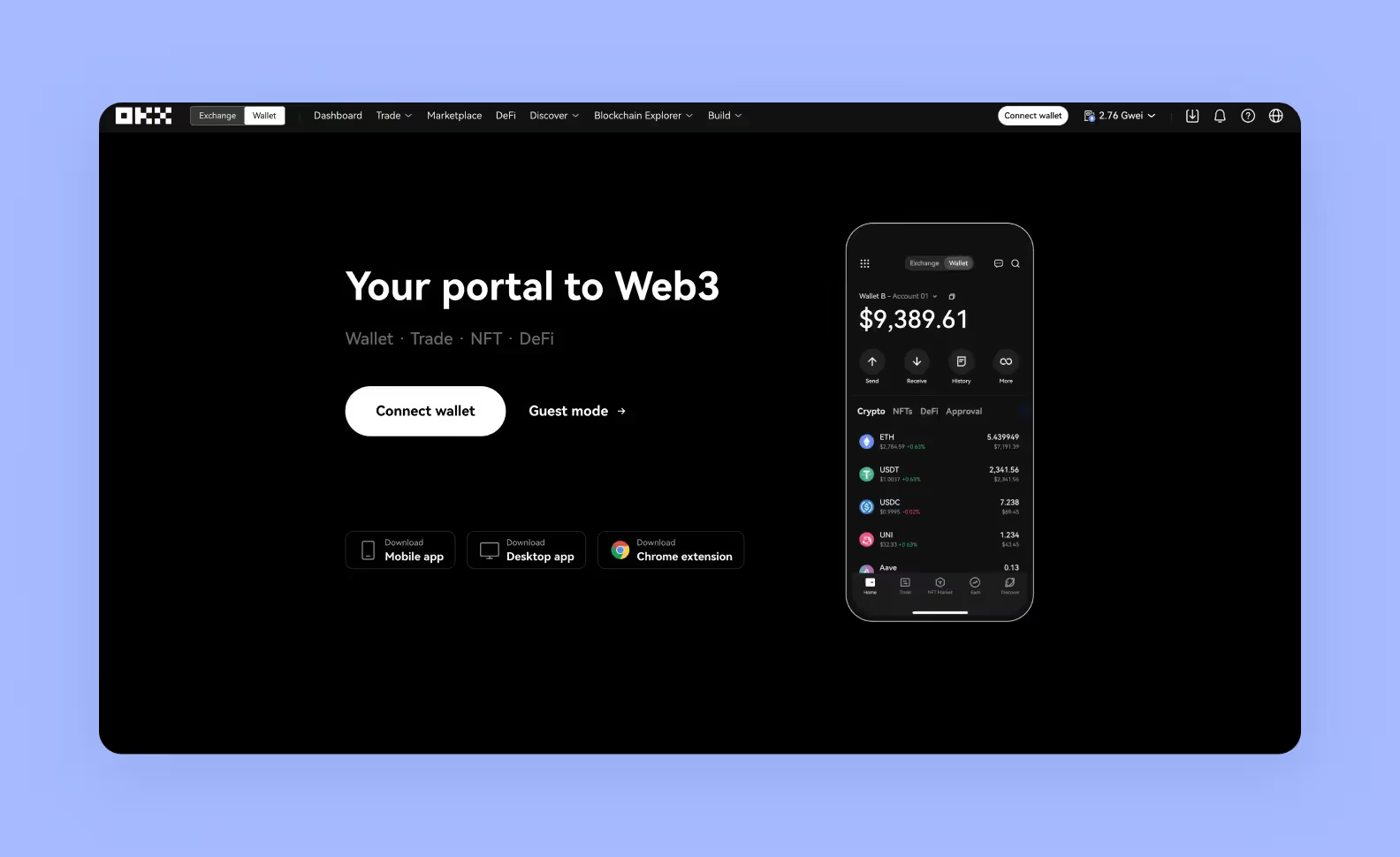
Now that we’re familiar with the basics, let’s go over the main pros and cons of each technology:
Let’s summarize the main differences between the two versions, based on the most important business factors.
When it comes to Web 2.0, many of its resources are controlled by a single entity: a central authority that stores and monitors online data. These can include search engines like Google, hardware giants like Microsoft and Apple, or even government institutions.
This creates some obstacles for businesses that rely on it. For instance, if a company uses cloud-based technologies like Amazon Web Services, it has limited control over its own data. With Web 3.0, you can take advantage of a decentralized storage infrastructure. This lets you retain complete control over your data and makes the product safer for users.
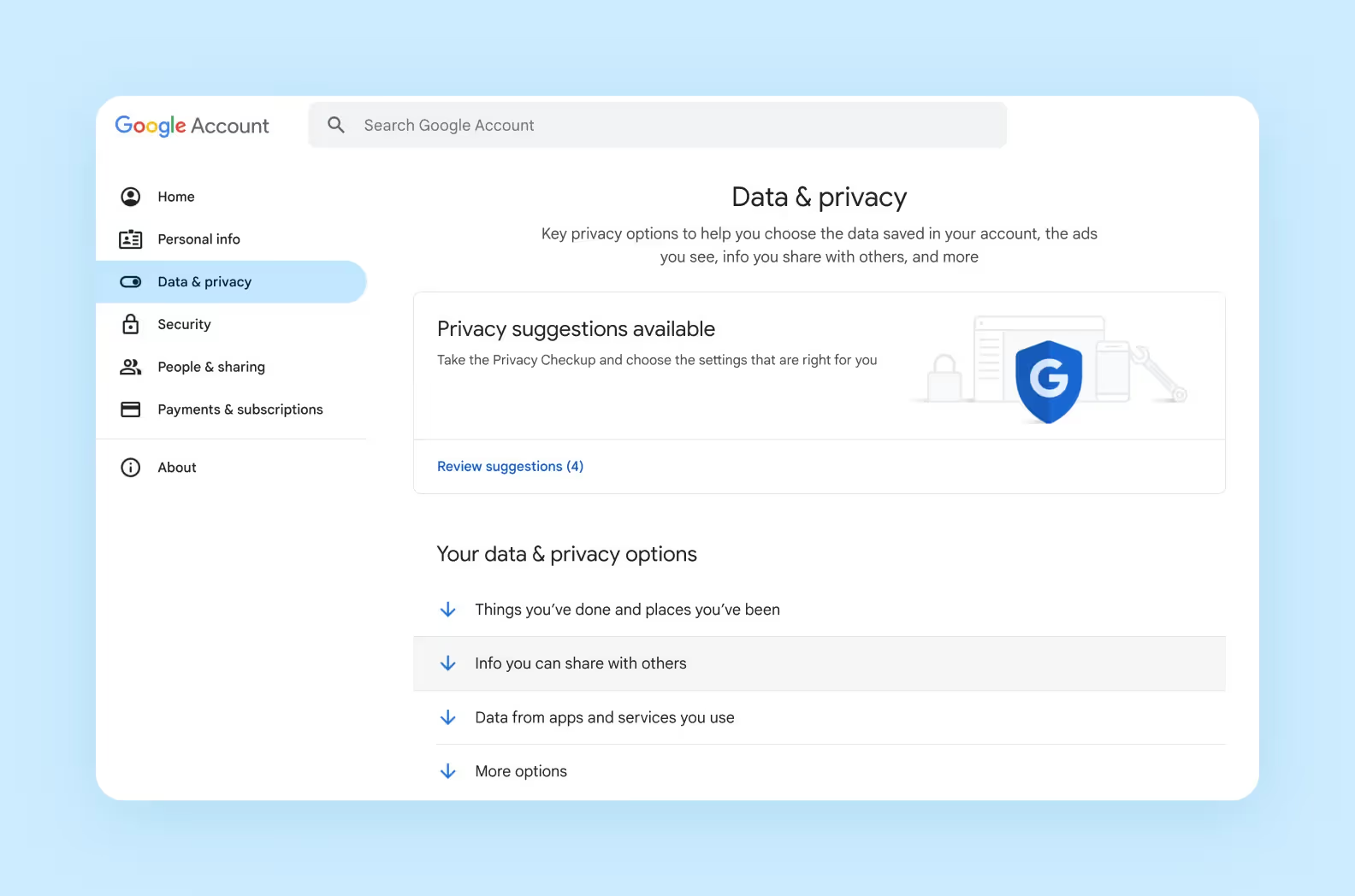
Web 3.0 offers new opportunities for boosting user engagement. Many platforms include gamification elements that help retain existing audiences and attract new ones.
For example, Web3 apps often rely on a play-to-earn model: users participate in the activities on the platform and are rewarded with crypto. This approach allows Web3 platforms to keep their users engaged by offering them additional incentives to interact with the app.
For example, in our case study about a cryptocurrency wallet with a built-in 2048 game.
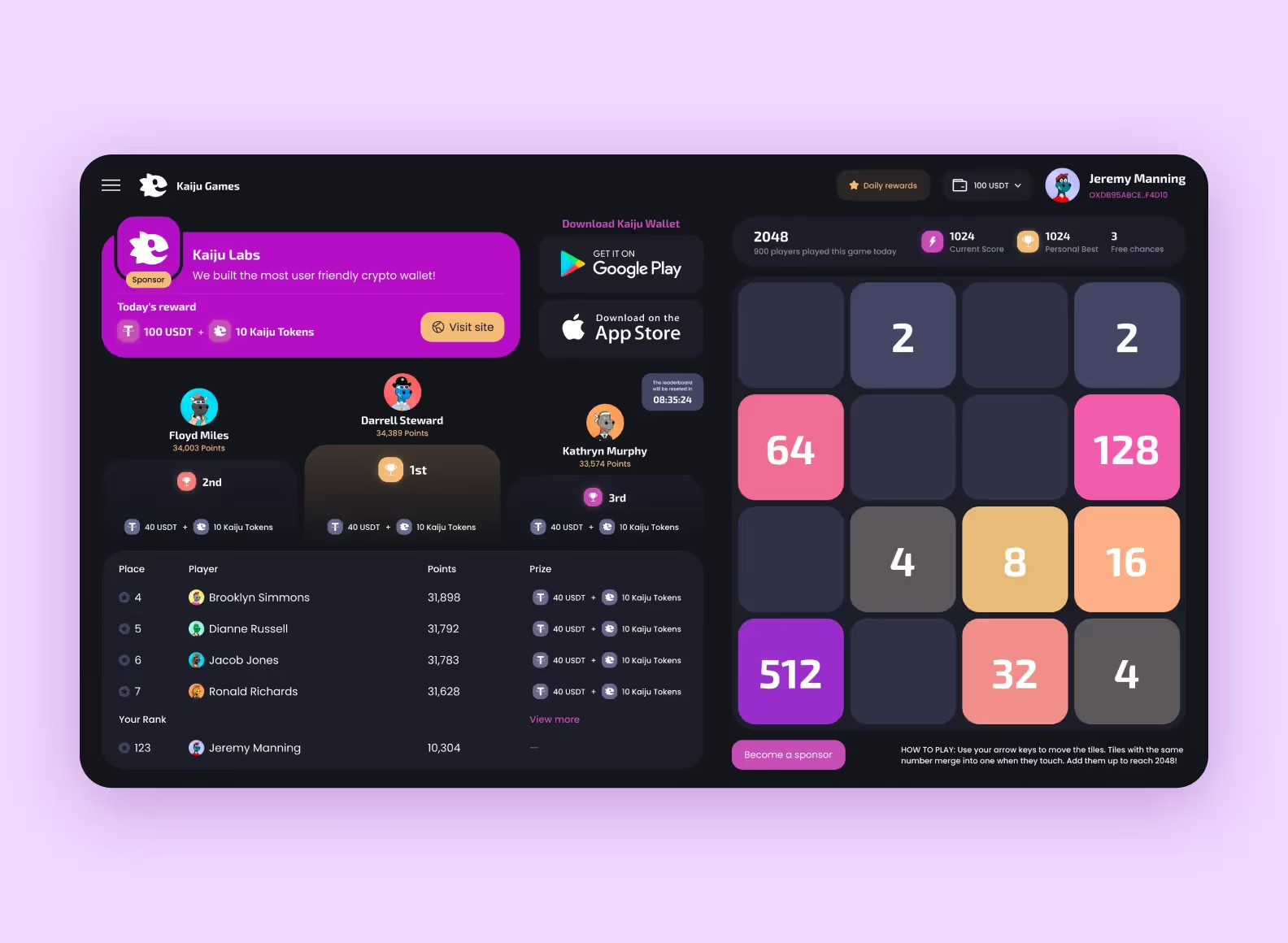
By contrast, traditional Web2 platforms often fail to retain users due to outdated engagement strategies. Overall, the user-centric approach of Web3 apps helps them build a strong community and offer more value to their audience.
Even today, some platforms on Web 2 rely on a single server network. This can lead to data breaches. Hackers can access the entire centralized system even through a small vulnerability. In the case of Web 3.0, this would be a daunting task, thanks to the decentralized nature of blockchain. Exploiting security flaws in this network is more difficult since it isn’t linked to a centralized server.
Many Web3 solutions also implement complex access services to improve security. These include private keys and decentralized identifiers (DIDs) which are unique web addresses used to confirm the person’s identity. Thanks to these measures, most Web3 platforms are much more secure compared to Web2 software.
The second and current generation of the web is the safest bet when it comes to consistent revenue generation. Monetization in Web 3 is a bit more complex. It relies on cryptocurrencies, which are notoriously volatile but open up new opportunities for earning money.
For example, businesses on Web3 can sell their own virtual coins to make a profit or provide staking services, offering users to store crypto on their platform in exchange for rewards. Some companies even sell ready-made development kits for creating blockchain apps. Overall, there are a lot of monetization options to choose from, and more and more trends continue to rise every day.
Web2 apps rely on centralized servers which can help decrease loading times. With them, data management is more straightforward, but most Web3 solutions use decentralized data storage. While this improves security, it often comes at the cost of performance.
There’s also the blockchain infrastructure that is at the core of decentralized applications. Each transaction on the blockchain needs to be confirmed through complex procedures. Because of this, the load times of Web3 software can be higher compared to Web2 apps which run through a centralized server.
Now let’s explore the fundamental differences between Web 2.0 and Web 3.0. Here’s a cheat sheet that will help you choose the right tech for your app development project:
We have analyzed the differences between Internet versions 2 and 3, their pros and cons, as well as how to choose which one is more suitable for your business. But, due to the fact that Web 3 has emerged only recently, many people haven’t yet had a chance to use it on projects based on this version.
Let’s look at examples of apps that already managed to use it.
Finance is one of the most popular segments of the decentralized web, as digital currency trading remains the main application of blockchain.
Uniswap is a crypto exchange based on a decentralized network. The platform relies on smart contracts and automatic digital agreements to facilitate transactions.
What makes Uniswap different is the fact that they’ve grown from a simple exchange to an entire ecosystem. Uniswap has hundreds of integrated DeFi apps, allowing them to cover the needs of the widest possible range of users.
The exchange hasn’t stopped there, continuing to invest in blockchain and Web 3 development actively, they even have their own grant. Uniswap Foundation invests in startups and research to make the financial world safe and open for everyone.
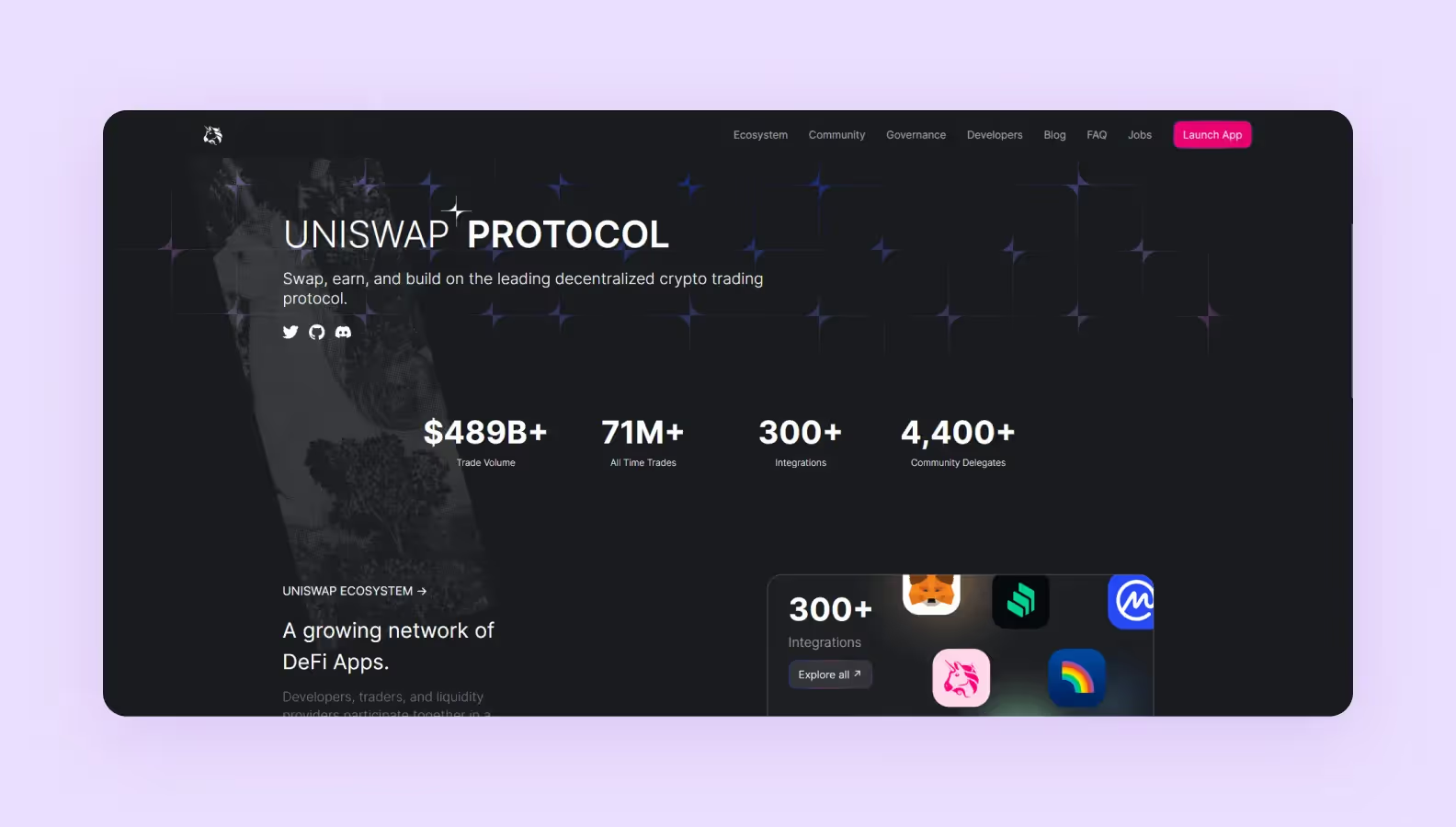
This technology is a useful tool for supply chain management, and even a digital giant like IBM is already making heavy use of it in its processes.
IBM Food Trust is designed to simplify supply chain management for food companies. It’s based on blockchain technology, which helps with tracking products throughout the supply chain, securely sharing documentation with business partners, and building consumer trust.
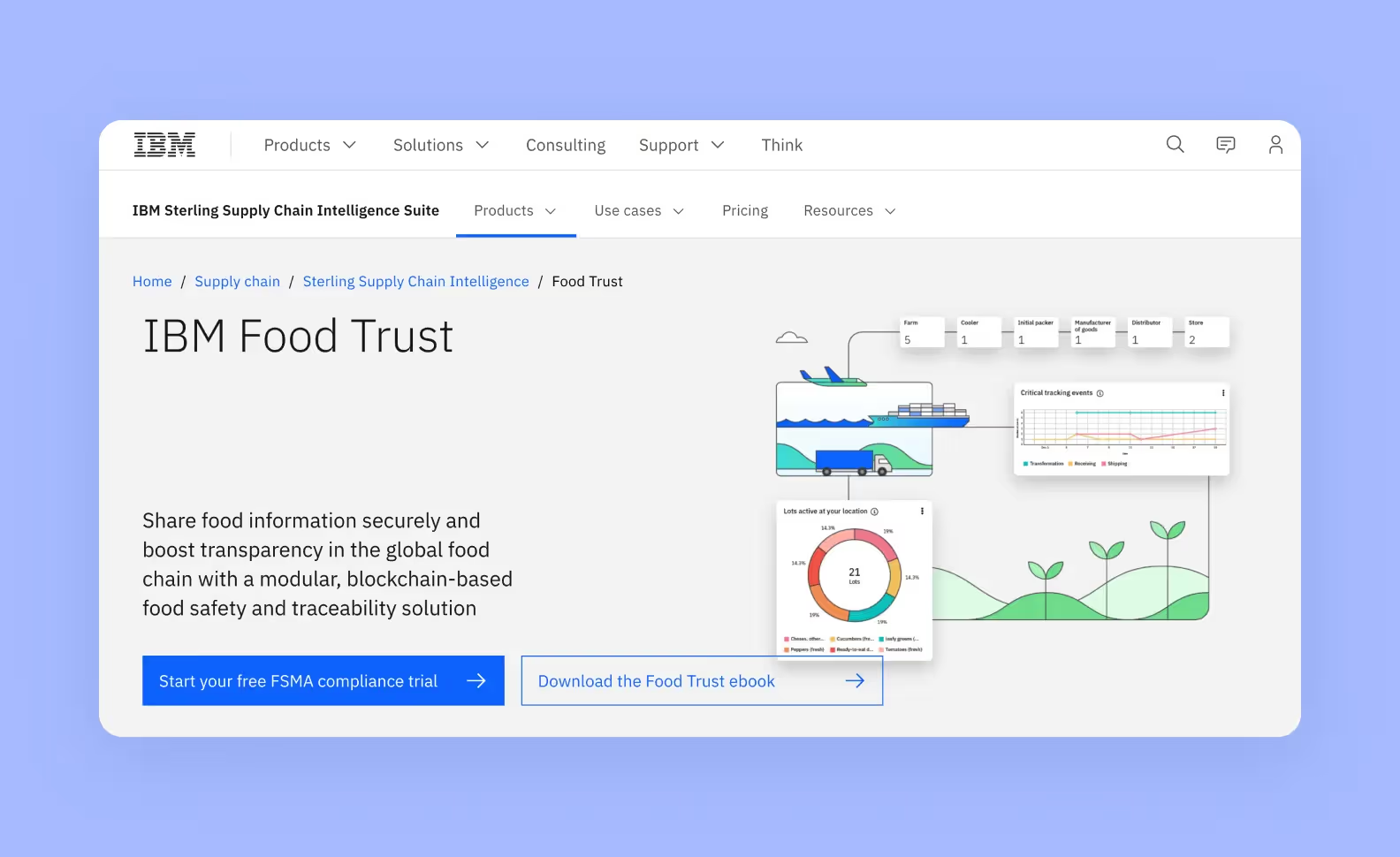
Decentralized apps are becoming popular even in healthcare. Medicalchain is a decentralized platform for storing and accessing electronic health records. It relies on blockchain technology to enable secure, fast, and transparent usage of medical data.
They use blockchain to create a user-focused electronic health record and maintain a single true version. Users can give conditional access to different healthcare agents as they see fit.
Moreover, each interaction is recorded as a transaction on Medicalchain’s distributed ledger, which means that even if someone gets a hold of users’ private data — it will be easily traceable.

Companies use the Web 3 technology to create engaging social media platforms. For example, Minds is an open-source, distributed social network based entirely on Web3.
This open-source network lets users have greater control over their privacy, by focusing on free speech, and minimally moderating the content on its platform. And the kicker is, that instead of just creating a profile, you can create your own decentralized social network.
You can even quickly launch your own network on the web and in app stores, instantly making it a part of Minds. This means it will be interoperable with Web2 and Web3 protocols like ActivityPub, RSS, DNS, Bitcoin, Ethereum, Stripe and more.
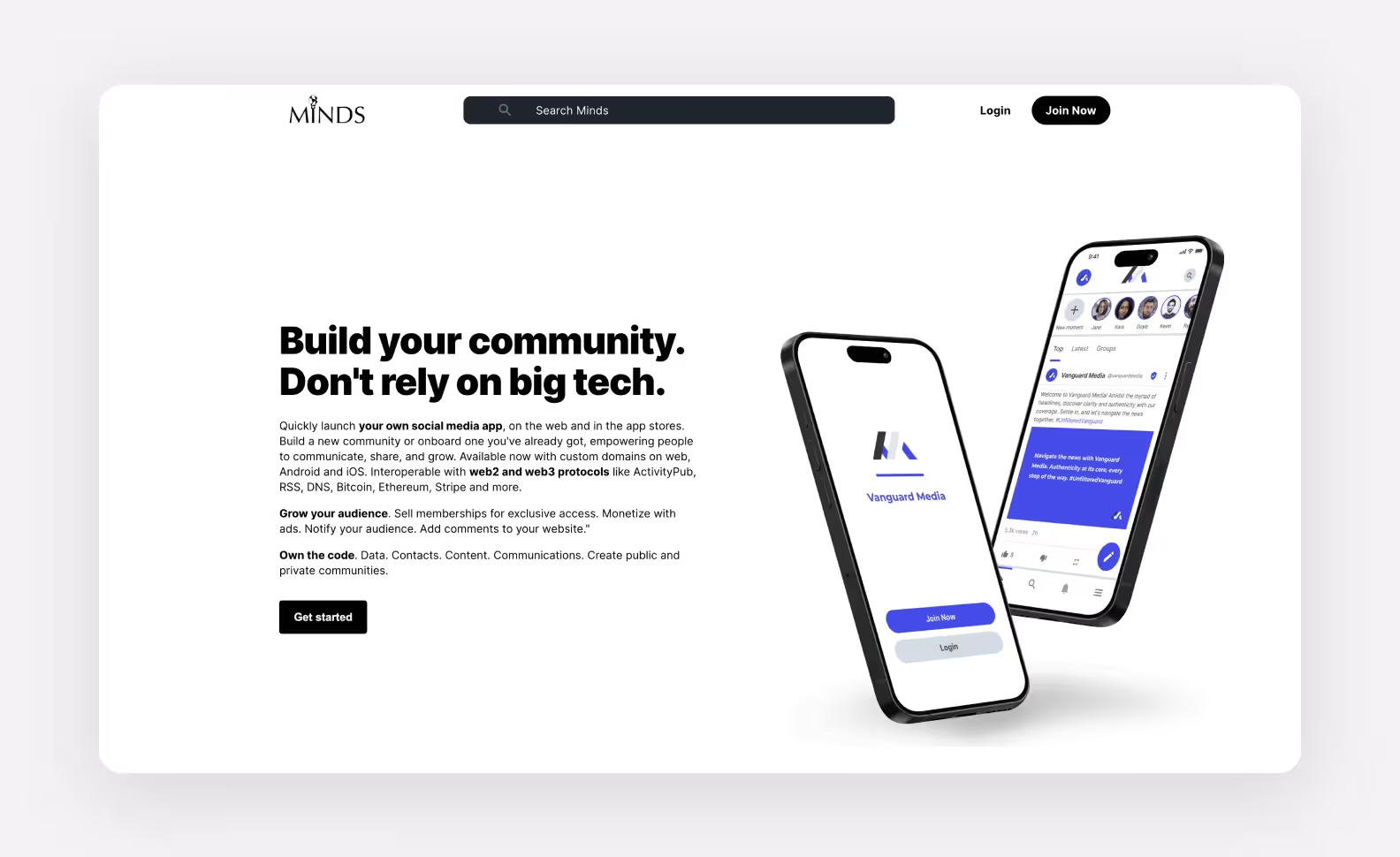
NFTs are unique digital assets that are often used in the gaming industry and the online art space. Think of them as proof of ownership of virtual goods.
The largest marketplace of digital tokens is OpenSea. Launched in 2017, this virtual auction house relies on blockchain technology and hosts thousands of listings for digital assets.
Here, you can not only browse and buy NFTs but you can also make and sell them. All you need is a crypto wallet and the art itself, the rest can be done on OpenSea.
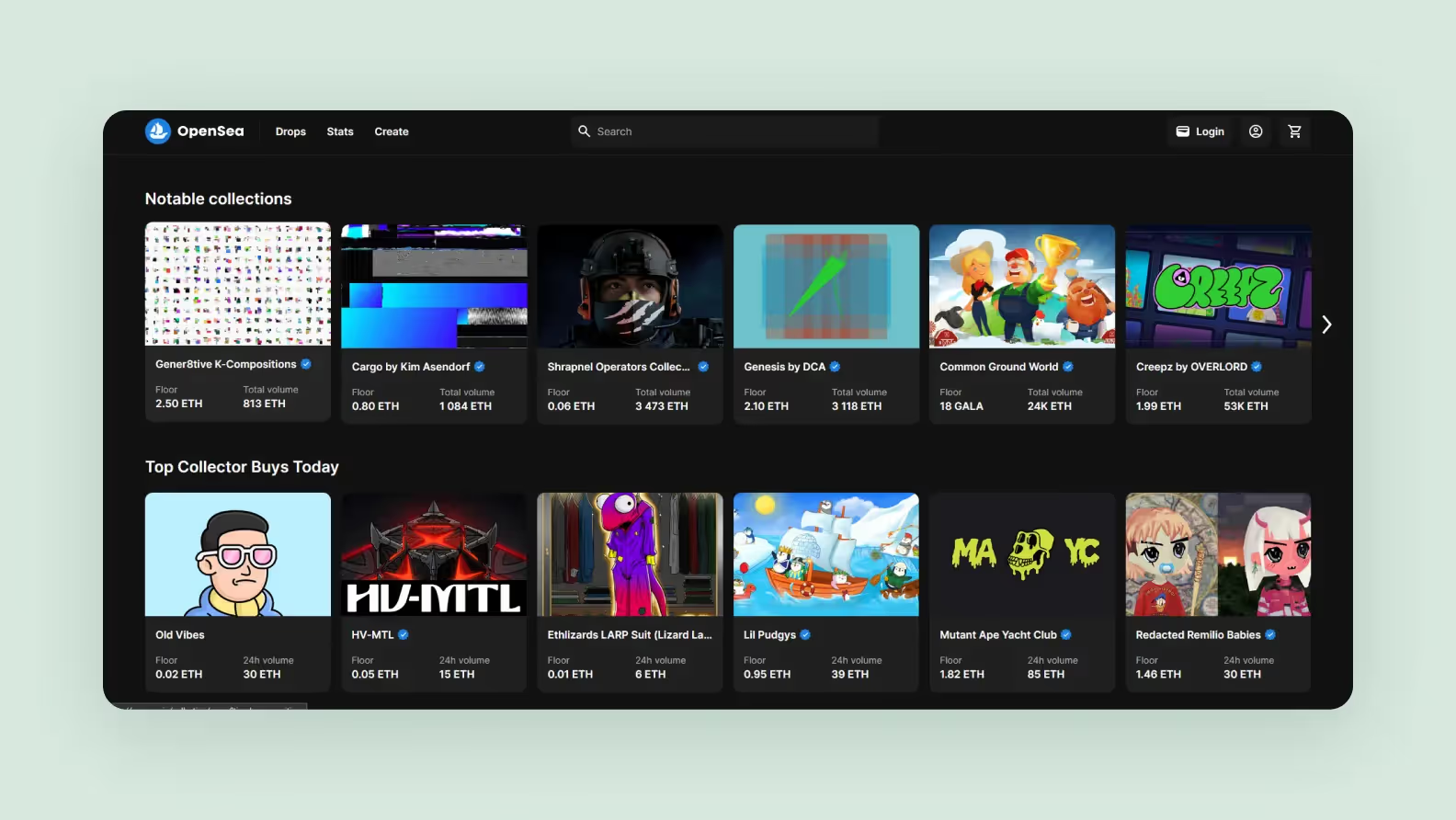
Everyone’s talking about the future potential the widespread adoption of Web 3.0 can have. It has come a long way in recent years, and even the biggest companies are starting to use it to their advantage.
The decentralized structure can give businesses more control when it comes to data ownership and user interaction. It allows them to communicate with their audiences directly, without relying on centralized companies, and better safeguard their data.
The future of Web 3.0 looks bright, but its potential for mainstream acceptance remains questionable. This technology still has a relatively high barrier to entry, and people who aren’t familiar with blockchain often find it too complicated. But, as Web 3.0 continues to grow, the standards for accessibility will inevitably rise, opening the door for new users.
The whole idea behind it is based on the democratization of data, a concept that’s getting more relevant each passing year. As large centralized platforms are strengthening their position on the global market, providing equal access to information becomes crucial. Web 3.0 is one of the most promising solutions to this problem. It can help mitigate the influence of central authorities, allowing users to protect their data and keep the Internet open to everyone.
Web 2.0 and Web 3.0 are very different technologies. Each has its own strengths and flaws, depending on how you choose to implement it. If you want to explore new business models and create engaging virtual worlds, then the third version is your best bet. But, if the traditional approach is more your style, then Web 2.0 will give you all the tools you need.
Whatever tech you choose for your project, you’ll need a skilled development team to build and support your app. At Purrweb, we’ll create a fully functioning MVP for your business in just 4 months. It will allow you to test the demand for your product and build a solid foundation for success.
➡️ If you’d like to discuss your idea with us, <a class="blog-modal_opener">fill out the form</a>, and get an estimate for the development budget and timeline.
If you’d like to learn more about our work, check out our case studies: